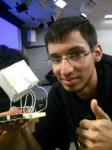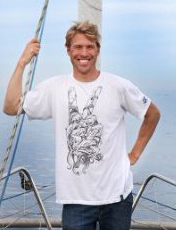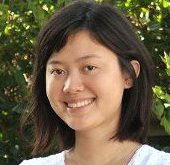
The second annual UC San Diego Frontiers of Innovation Scholars Program (FISP) Symposium will take place on October 18 from 8am to 5:45pm at the Price Center. The symposium will showcase interdisciplilnary research carried out by postdocs, graduate and undergraduate student researchers with funding from the campus itself. Two types of presentations are scheduled: oral presentations, and poster sessions (for one-on-one interaction with the student researchers). The oral presentations will run 15 minutes each for undergraduates, 25 minutes for grad students and postdoctoral researchers (in both cases, leaving 5 minutes for Q&A at the end of each talk).
 CSE students set to deliver oral presentations at the FISP Symposium include Sharad Vikram, a first-year graduate student specializing in machine learning under his mentor, CSE Prof. Sanjoy Dasgupta. His topic: "Air Quality Monitoring with Cheap Hardware." Vikram designed a cheap air-quality sensor that monitors CO, NO and other pollutants with the goal of better understanding and eventually improving air pollution patterns over a large area (e.g. San Diego County). "We are currently collecting a dataset of sensor measurements from some select locations in Los Angeles," said Vikram. "Current sensors are expensive and immobile, but will produce more reliable and precise measurements than those from a sensor with commodity hardware. Future challenges include remote calibration of sensors to produce robust measurements and inference of air pollution in areas without sensors." Using machine learning and statistical inference, Vikram aims to solve such problems.
CSE students set to deliver oral presentations at the FISP Symposium include Sharad Vikram, a first-year graduate student specializing in machine learning under his mentor, CSE Prof. Sanjoy Dasgupta. His topic: "Air Quality Monitoring with Cheap Hardware." Vikram designed a cheap air-quality sensor that monitors CO, NO and other pollutants with the goal of better understanding and eventually improving air pollution patterns over a large area (e.g. San Diego County). "We are currently collecting a dataset of sensor measurements from some select locations in Los Angeles," said Vikram. "Current sensors are expensive and immobile, but will produce more reliable and precise measurements than those from a sensor with commodity hardware. Future challenges include remote calibration of sensors to produce robust measurements and inference of air pollution in areas without sensors." Using machine learning and statistical inference, Vikram aims to solve such problems.
 Dual computer science and mathematics major Carolyn Breeze and two other undergraduates in anthropology, Rosemary Elliott Smith and Taylor Harman, worked together on the interdisciplinary At-Risk Cultural Heritage project funded by a University of California Catalyst award. The students were mentored by principal investigator Tom Levy, who directs the new Center for Cyber-Archaeology and Sustainability (CCAS), based in the Qualcomm Institute. The joint FISP project was presented as part of an all-themes session because of its broad applicability to all FISP target areas. The project, "At-Risk Cultural Heritage and Archaeological Data Management: The ArchaeoSTOR Solution," involves a web-based database (above left) called ArchaeoSTOR that helps researchers safely store artifact metadata, location data, photographs, and even point-cloud data (produced using LIDAR laser scans). The students traveled to Greece this past summer with Levy to participate in excavation of a looted Mycenaean tomb at the site of Kastrouli near Delphi. According to their abstract, "the Kastrouli excavations proved to be a perfect field test for the applications of ArchaeoSTOR that our team developed [because it allowed them to] dramatically improve the functionality of the database and preserve vast amounts of precious data associated with the cultural heritage site."
Dual computer science and mathematics major Carolyn Breeze and two other undergraduates in anthropology, Rosemary Elliott Smith and Taylor Harman, worked together on the interdisciplinary At-Risk Cultural Heritage project funded by a University of California Catalyst award. The students were mentored by principal investigator Tom Levy, who directs the new Center for Cyber-Archaeology and Sustainability (CCAS), based in the Qualcomm Institute. The joint FISP project was presented as part of an all-themes session because of its broad applicability to all FISP target areas. The project, "At-Risk Cultural Heritage and Archaeological Data Management: The ArchaeoSTOR Solution," involves a web-based database (above left) called ArchaeoSTOR that helps researchers safely store artifact metadata, location data, photographs, and even point-cloud data (produced using LIDAR laser scans). The students traveled to Greece this past summer with Levy to participate in excavation of a looted Mycenaean tomb at the site of Kastrouli near Delphi. According to their abstract, "the Kastrouli excavations proved to be a perfect field test for the applications of ArchaeoSTOR that our team developed [because it allowed them to] dramatically improve the functionality of the database and preserve vast amounts of precious data associated with the cultural heritage site."
 Given the inherently interdisciplinary nature of FISP research projects, not all the students working under CSE mentors were computer science students themselves. For instance, CSE Prof. Gary Cottrell mentored nanoengineering Ph.D. student Chen Zhang (right), who was developing "Small Molecule Accurate Recognition Technology" (SMART) while also working in the Center for Marine Biotechnology and Biomedicine in the Scripps Institution of Oceanography. The tool itself was developed to speed up marine natural products discovery, i.e., natural products found in the ocean. "By testing different spectra using this algorithm," says Zhang, "we can rapidly generate hypotheses about the relationship of new molecules to those used for the training -- based entirely on their nuclear magnetic resonance properties."
Given the inherently interdisciplinary nature of FISP research projects, not all the students working under CSE mentors were computer science students themselves. For instance, CSE Prof. Gary Cottrell mentored nanoengineering Ph.D. student Chen Zhang (right), who was developing "Small Molecule Accurate Recognition Technology" (SMART) while also working in the Center for Marine Biotechnology and Biomedicine in the Scripps Institution of Oceanography. The tool itself was developed to speed up marine natural products discovery, i.e., natural products found in the ocean. "By testing different spectra using this algorithm," says Zhang, "we can rapidly generate hypotheses about the relationship of new molecules to those used for the training -- based entirely on their nuclear magnetic resonance properties."
 CSE professors Ryan Kastner, faculty-affiate Falko Kuester and Scripps Prof. Stuart Sandin together mentored Clinton Edwards, a Scripps grad student. Edwards (left) will present on a "Platform for Ocean Imaging: Building Capacity for Visualizing, Analyzing and Communicating Underwater Ecological Data." The project targets documentation of large plots of seafloor habitats -- measuring hundreds of square meters -- by speeding up the post-processing that is so time-consuming and computationally intensive. "We have begun to develop and test platforms to address the intensive collection, storage and processing steps required to facilitate rapid extraction of key metrics from 3D digital maps of the seafloor," writes Edwards in his abstract. "These maps will enable new insights in community ecology by increasing the scale of observation by over an order-of-magnitude [scale] larger than what is currently available."
CSE professors Ryan Kastner, faculty-affiate Falko Kuester and Scripps Prof. Stuart Sandin together mentored Clinton Edwards, a Scripps grad student. Edwards (left) will present on a "Platform for Ocean Imaging: Building Capacity for Visualizing, Analyzing and Communicating Underwater Ecological Data." The project targets documentation of large plots of seafloor habitats -- measuring hundreds of square meters -- by speeding up the post-processing that is so time-consuming and computationally intensive. "We have begun to develop and test platforms to address the intensive collection, storage and processing steps required to facilitate rapid extraction of key metrics from 3D digital maps of the seafloor," writes Edwards in his abstract. "These maps will enable new insights in community ecology by increasing the scale of observation by over an order-of-magnitude [scale] larger than what is currently available."
 Kuester is also the moderator of an undergraduate panel on enriching human life and society, and he mentored the first speaker of the session: UC San Diego media studies major and newly-minted alumna, Emily Zheng (B.A. '16). Her talk will be on "Media in the Field". Zheng (right) is a media intern in Kuester's CISA3-CHEI (Cultural Heritage Engineering Initiative). She was responsible for producing content based on CISA3-CHEI expeditions. In her presentation, Zheng will focus on media produced on expeditions to San Marino and Chaco Canyon. "As a part of CHEI, my team collects data for the purposes of 3D reconstructions. This is done through techniques such as LIDAR scanning, SFM [Structure from Motion], CaveCams, and UAV imaging," notes Zheng. "My work concerns the recording of the labor behind data collection as it happens in the field to show the techniques and challenges of working in variable and changing situations." (Zheng was also peer-mentored by Dominique Meyer, a previous recipient of a FISP scholarship to work with Kuester.)
Kuester is also the moderator of an undergraduate panel on enriching human life and society, and he mentored the first speaker of the session: UC San Diego media studies major and newly-minted alumna, Emily Zheng (B.A. '16). Her talk will be on "Media in the Field". Zheng (right) is a media intern in Kuester's CISA3-CHEI (Cultural Heritage Engineering Initiative). She was responsible for producing content based on CISA3-CHEI expeditions. In her presentation, Zheng will focus on media produced on expeditions to San Marino and Chaco Canyon. "As a part of CHEI, my team collects data for the purposes of 3D reconstructions. This is done through techniques such as LIDAR scanning, SFM [Structure from Motion], CaveCams, and UAV imaging," notes Zheng. "My work concerns the recording of the labor behind data collection as it happens in the field to show the techniques and challenges of working in variable and changing situations." (Zheng was also peer-mentored by Dominique Meyer, a previous recipient of a FISP scholarship to work with Kuester.)
"What I found impressive is that our FISP students applied their research at not just one, but two UNESCO World Heritage Sites, conducting fieldwork at home and abroad, in San Marino and Italy," observed CISA3-CHEI director Kuester. "They also presented their work at national and international conferences, and they leveraged opportunities with two other NSF and National Geographic-funded archaeology projects outside of UC San Diego. These undergraduate trainees left quite a legacy over just the past year."
 CSE lecturer and Qualcomm Institute (QI) research scientist Jurgen Schulze and ECE Prof. Truong Nguyen jointly mentored ECE second-year Ph.D. student Ji Dai on a study of "Stereo Panorama Generation from Point-Cloud Re-projection." Dai (left) will propose an "algorithm that can produce stereo panoramas with minimized vertical disparity and parallax error. The algorithm only needs input stereo image pairs and the camera positions at which the image pairs were captured. The algorithm also provides users the freedom of choosing desired viewing location and angle." They can also choose a preferred baseline.
CSE lecturer and Qualcomm Institute (QI) research scientist Jurgen Schulze and ECE Prof. Truong Nguyen jointly mentored ECE second-year Ph.D. student Ji Dai on a study of "Stereo Panorama Generation from Point-Cloud Re-projection." Dai (left) will propose an "algorithm that can produce stereo panoramas with minimized vertical disparity and parallax error. The algorithm only needs input stereo image pairs and the camera positions at which the image pairs were captured. The algorithm also provides users the freedom of choosing desired viewing location and angle." They can also choose a preferred baseline.
For information on CSE involvement in the FISP poster sessions, see separate article.
Download the complete program PDF with abstracts for all presentations.
Read about CSE participants in the FISP Symposium 2016 poster sessions.

